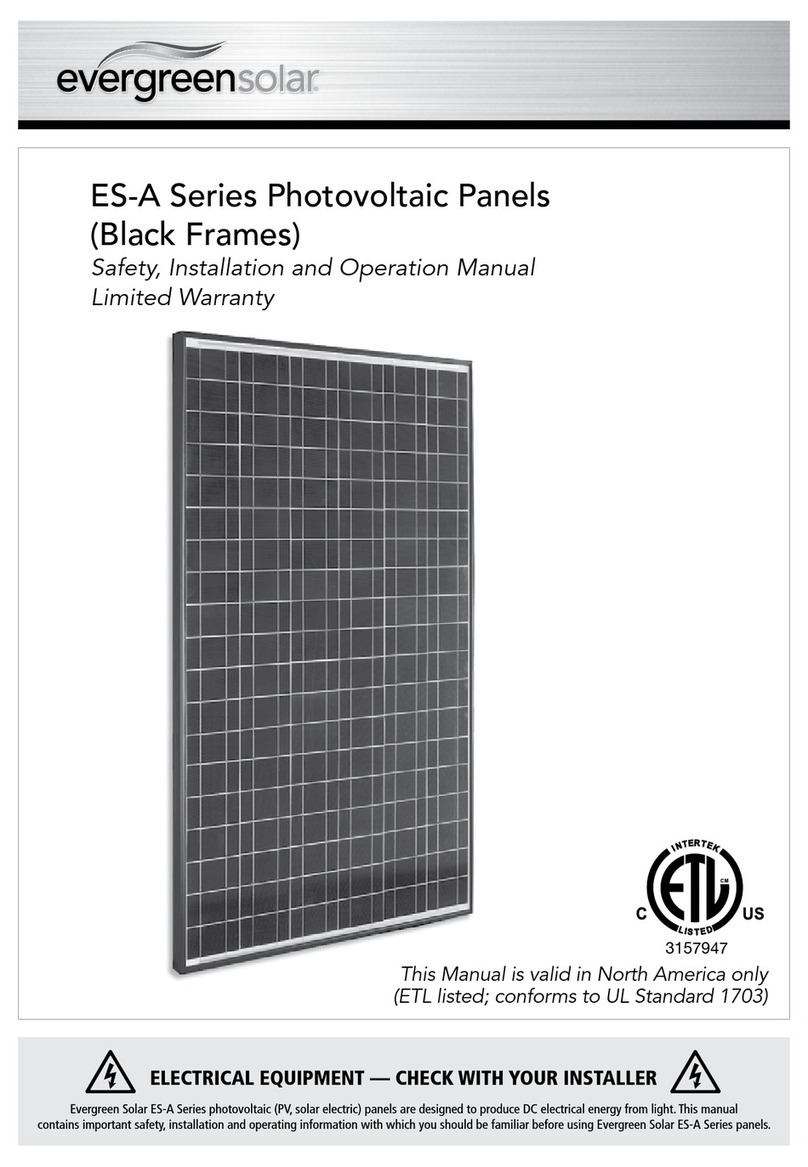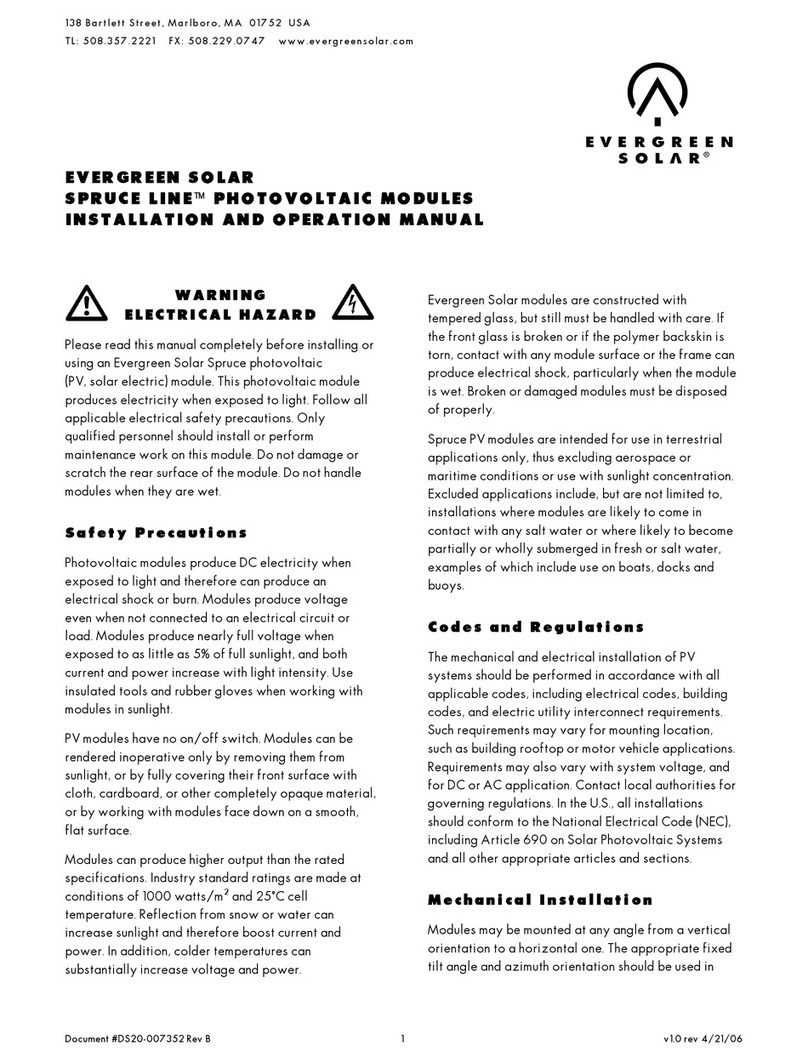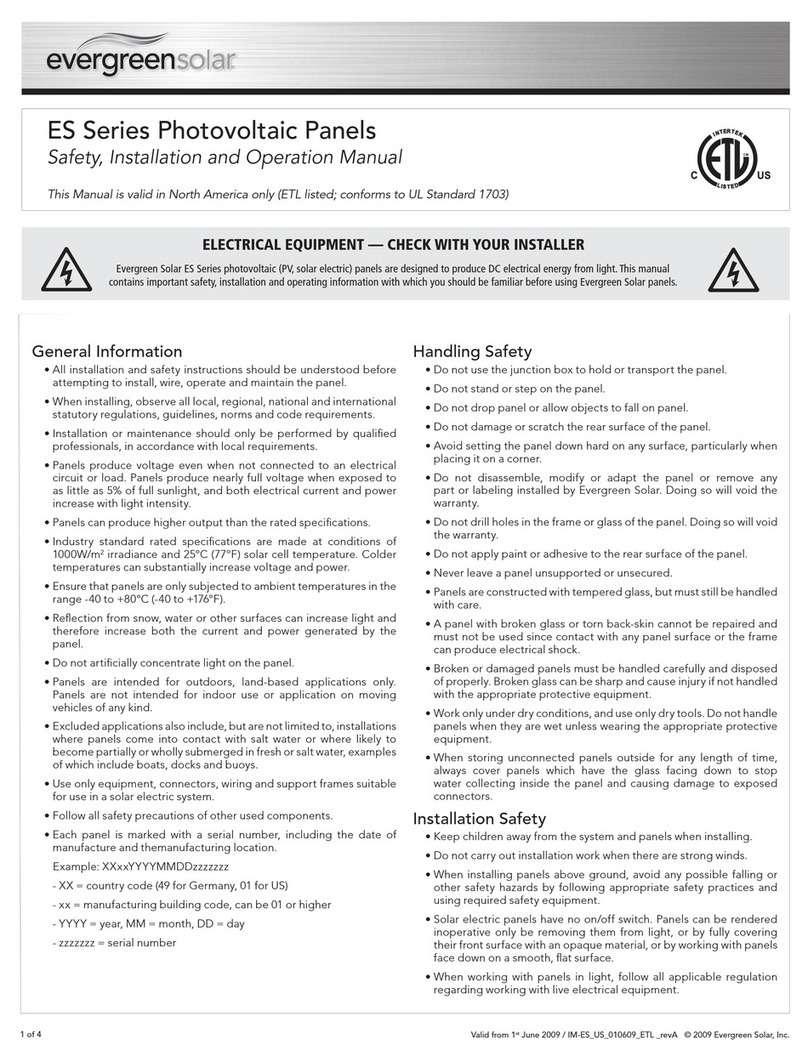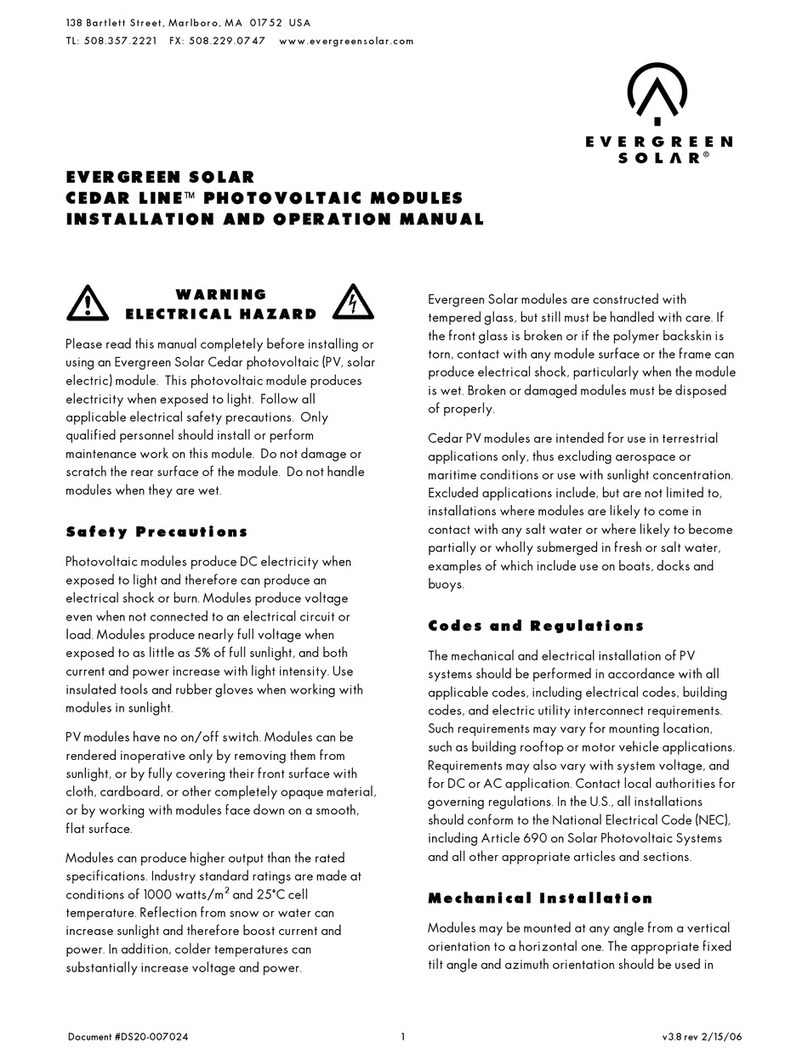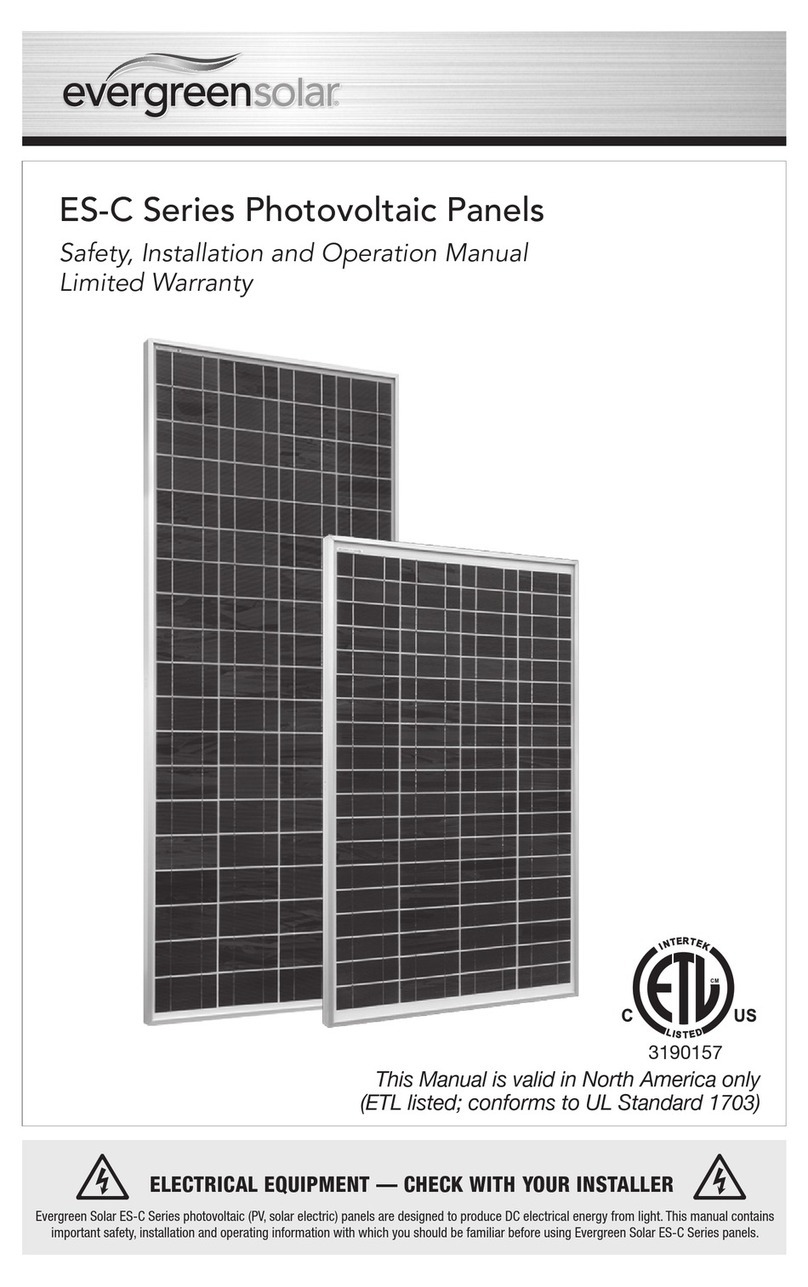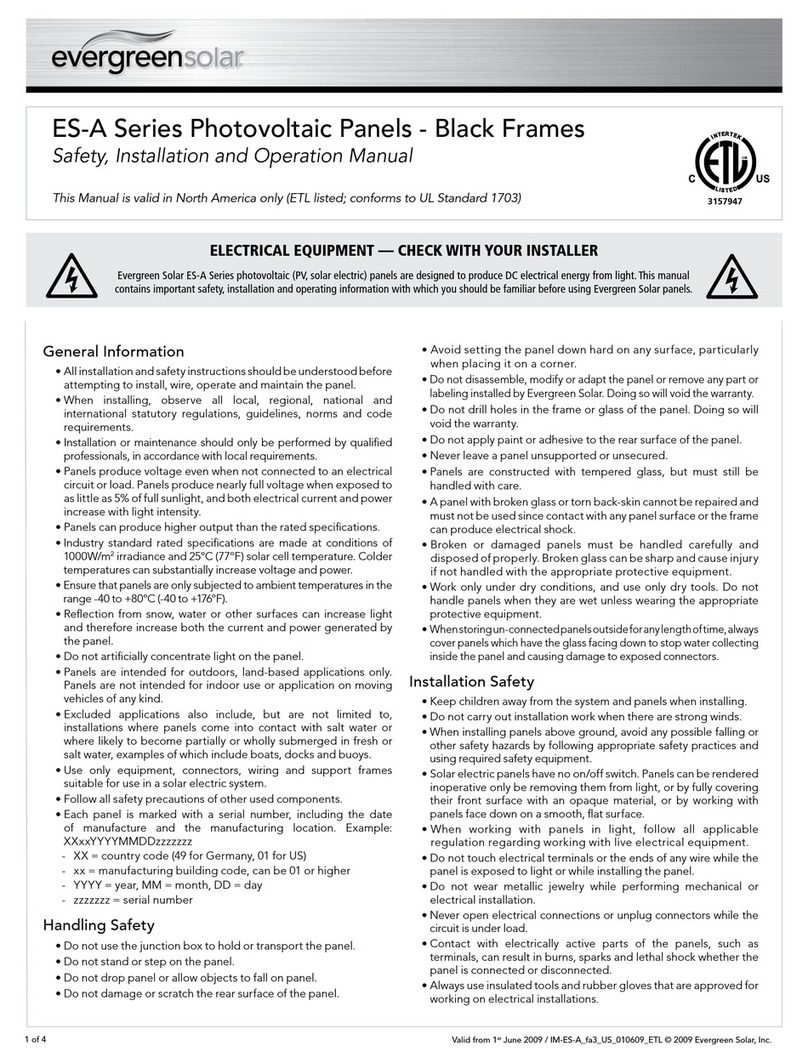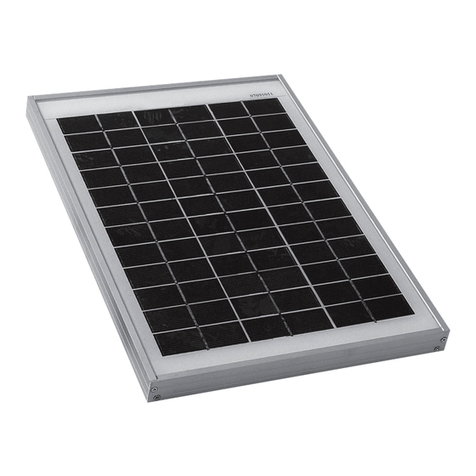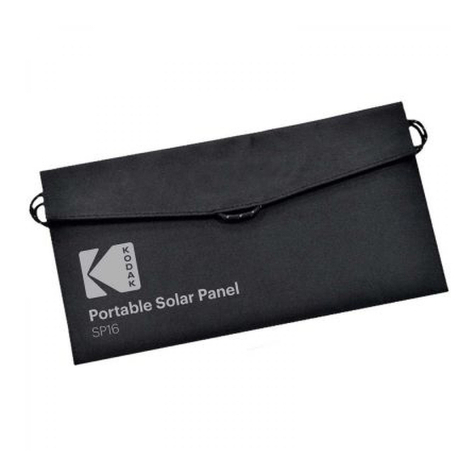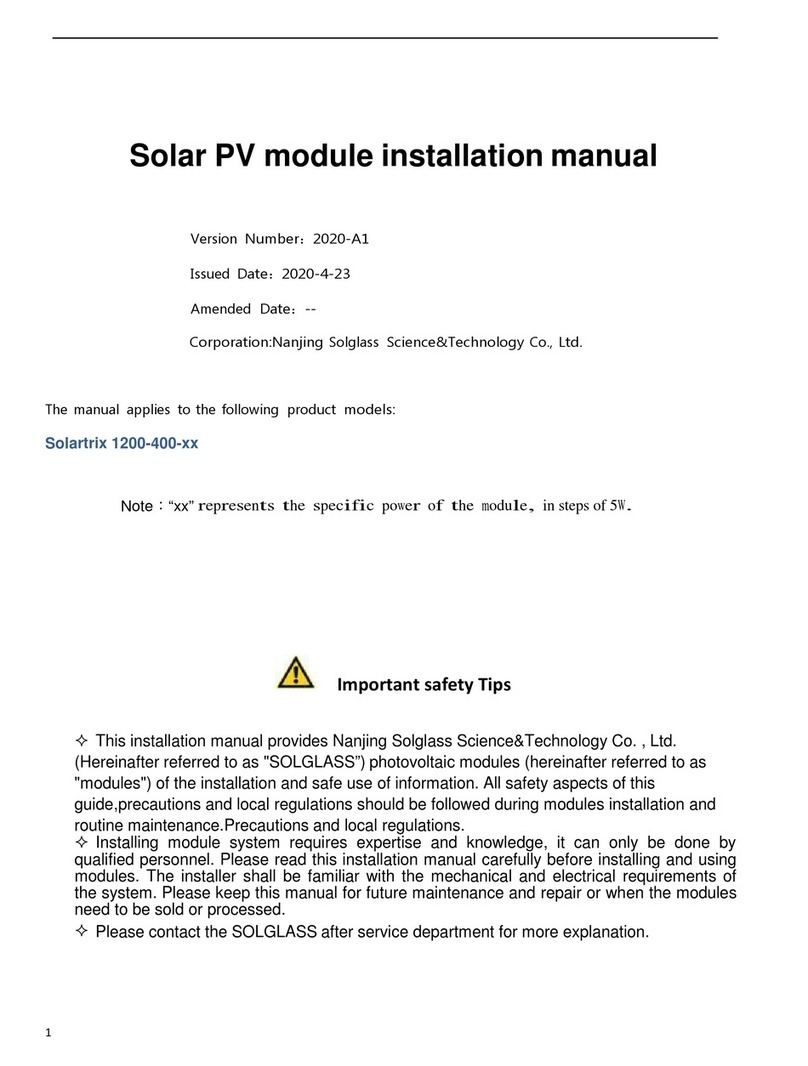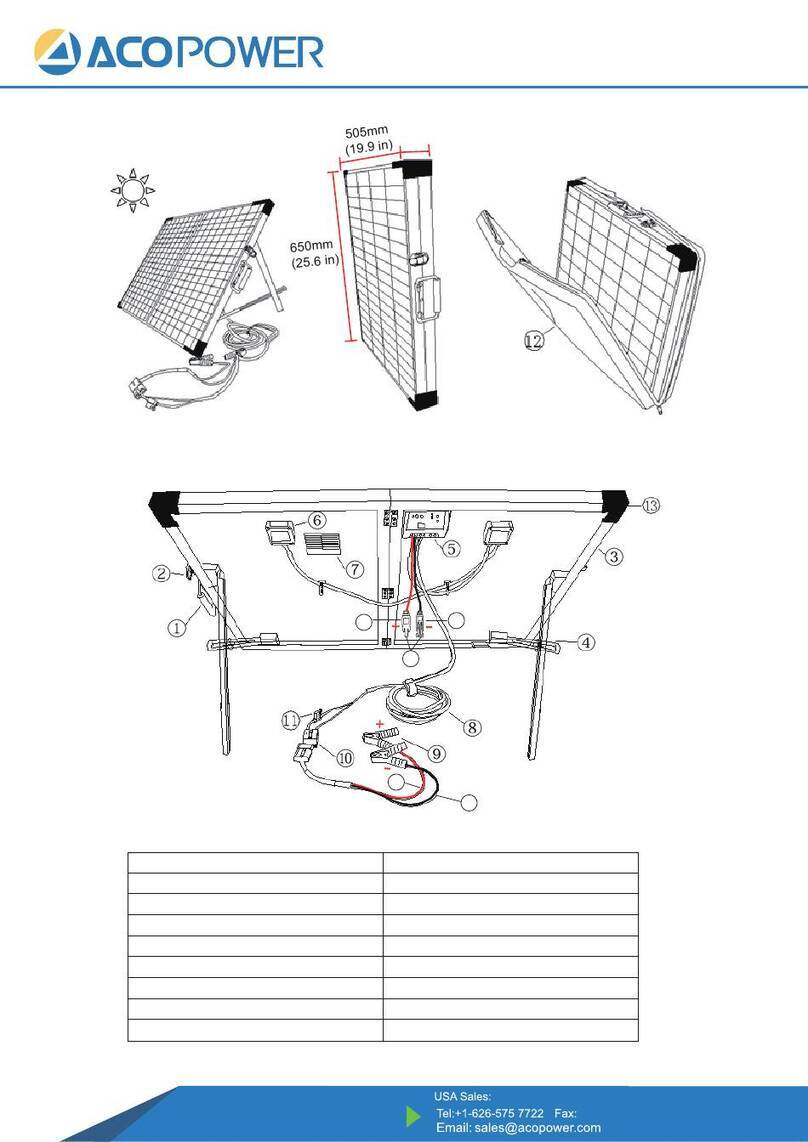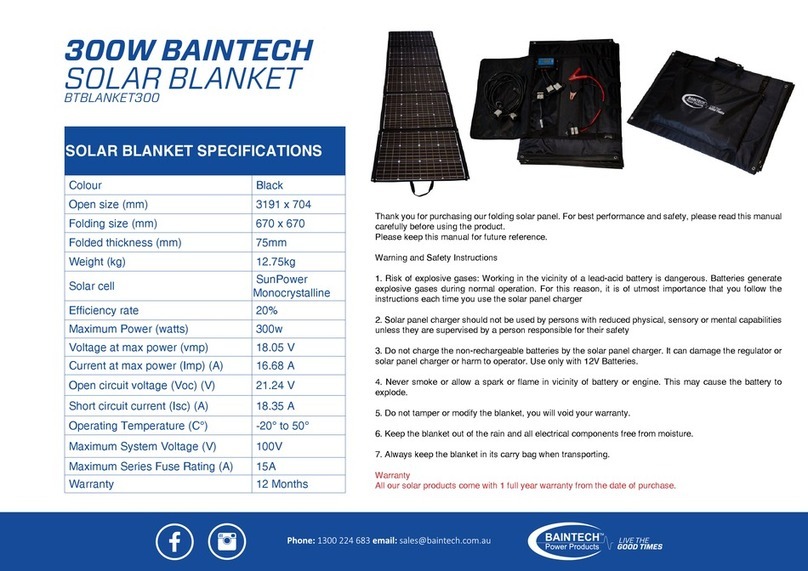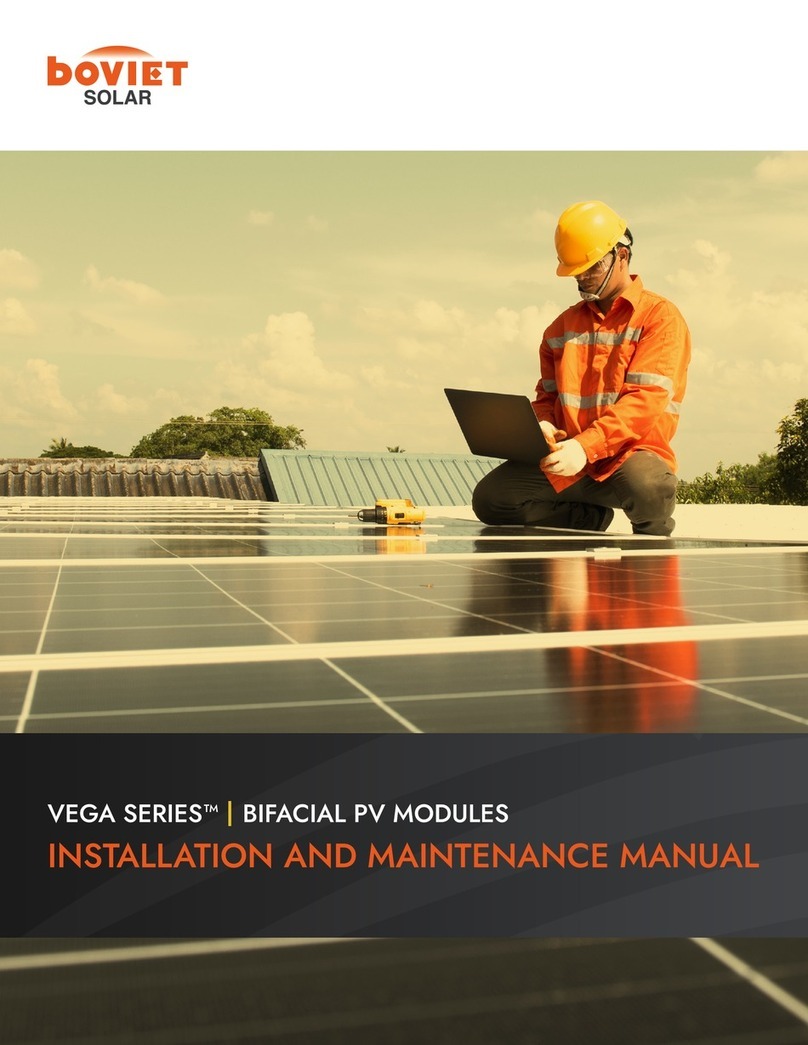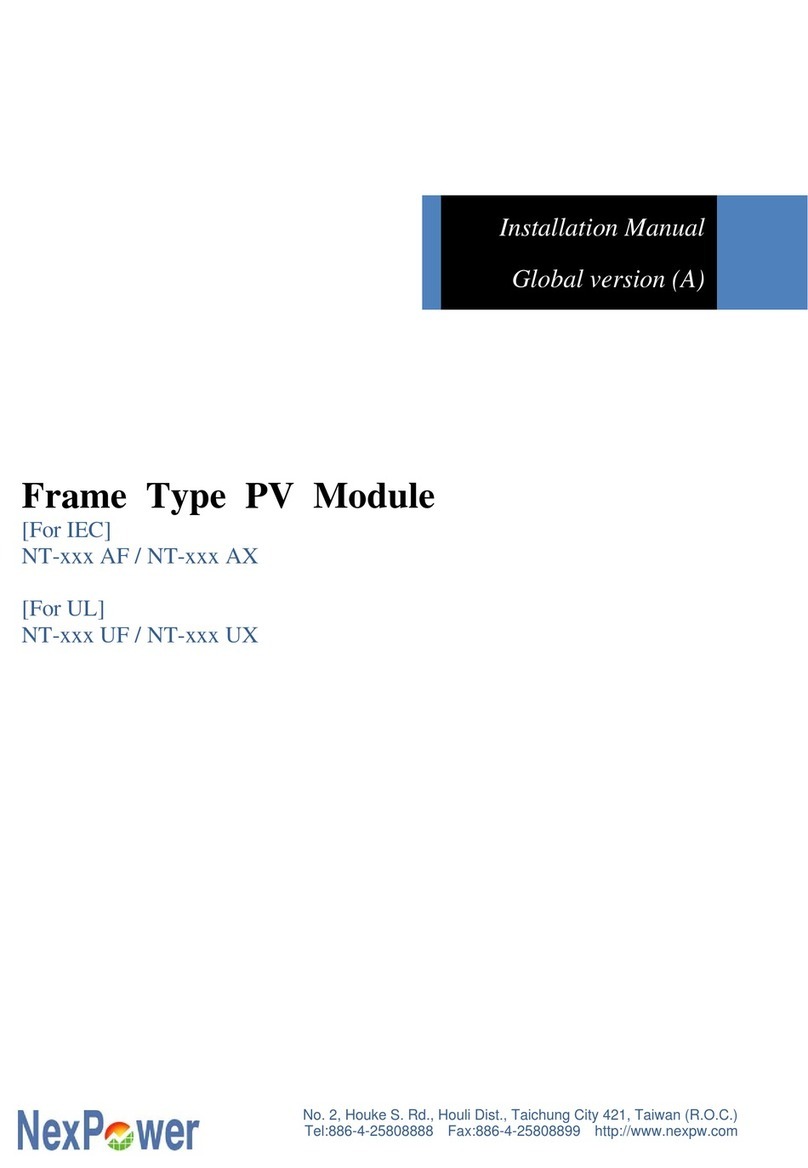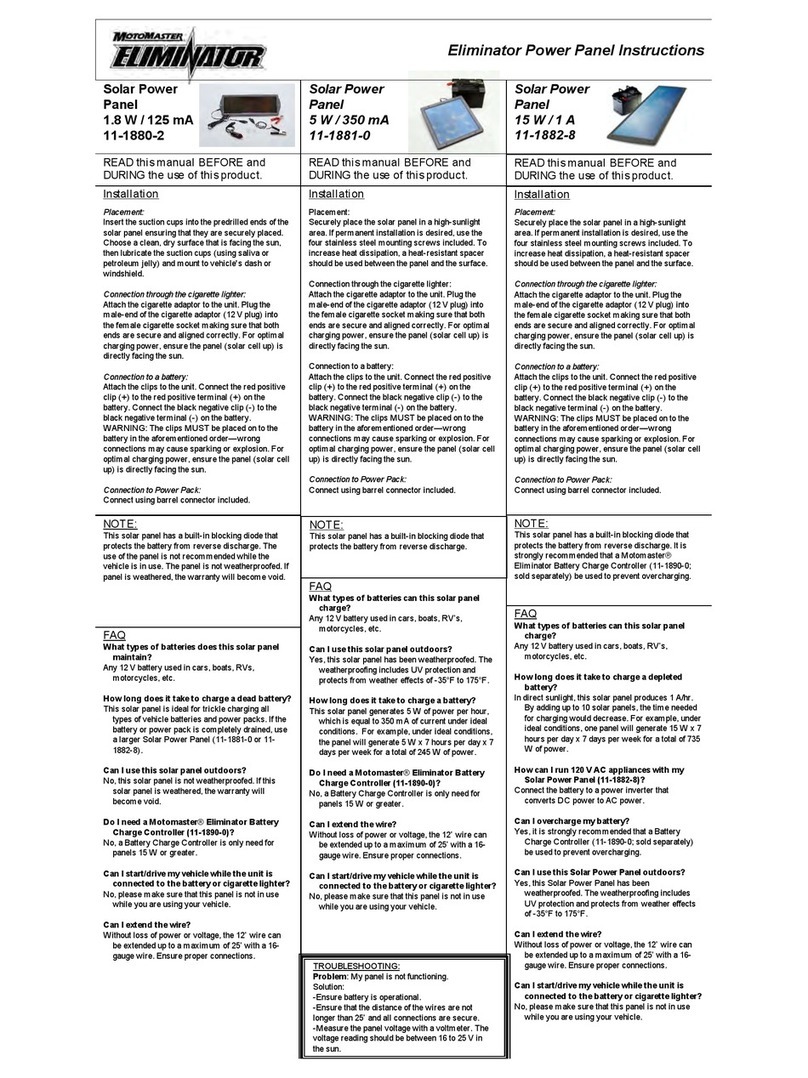
ELECTRICAL EQUIPMENT — CHECK WITH YOUR INSTALLER
Evergreen Solar ES-C Series photovoltaic (PV, solar electric) panels are designed to produce DC electrical energy from light. This manual
contains important safety, installation and operating information with which you should be familiar before using Evergreen Solar panels.
General Information
• All installation and safety instructions should be understood before attempting to
install, wire, operate and maintain the panel.
• When installing, observe all local, regional, national and international statutory
regulations, guidelines, norms and code requirements.
• Installation or maintenance should only be performed by qualied professionals.
• Panels produce voltage even when not connected to an electrical circuit or load.
Panels produce nearly full voltage when exposed to as little as 5% of full sunlight,
and both electrical current and power increase with light intensity.
• Panels can produce higher output than the rated specications.
• Industry standard rated specications are made at conditions of 1000W/m2
irradiance and 25°C (77ºF) solar cell temperature. Colder temperatures can
substantially increase voltage and power.
• Ensure that panels are only subjected to ambient temperatures in the range -40 to
+80°C (-40 to +176°F).
• Reection from snow, water or other surfaces can increase light and therefore
increase both the current and power generated by the panel.
• Do not articially concentrate light on the panel.
• Panels are intended for outdoors, land-based applications only. Panels are not
intended for indoor use.
• Excluded applications also include, but are not limited to, installations where panels
come into contact with salt water or where likely to become partially or wholly
submerged in fresh or salt water, examples of which include boats, docks and buoys.
• Use only equipment, connectors, wiring and support frames suitable for use in a
solar electric system.
• Follow all safety precautions of other used components.
• Each panel is marked with a serial number, including the date of manufacture and
the manufacturing location. Example: XXxxYYYYMMDDzzzzzzz
- XX = country code (49 for Germany, 01 for US, 86 for China)
- xx = manufacturing building code, can be 01 or higher
- YYYY = year, MM = month, DD = day
- zzzzzzz = serial number
Handling Safety
• Do not use the junction box to hold or transport the panel.
• Do not stand or step on the panel.
• Do not drop panel or allow objects to fall on panel.
• Do not damage or scratch the rear surface of the panel.
• Avoid setting the panel down hard on any surface, particularly when placing
it on a corner.
• Do not disassemble, modify or adapt the panel or remove any part or labeling
installed by Evergreen Solar. Doing so will void the warranty.
• Do not drill holes in the frame or glass of the panel. Doing so will void the
warranty.
• Do not apply paint or adhesive to the rear surface of the panel.
• Never leave a panel unsupported or unsecured.
• Panels are constructed with tempered glass, but must still be handled with care.
•
A panel with broken glass or torn back-skin cannot be repaired and must not be used
since contact with any panel surface or the frame can produce electrical shock.
• Broken or damaged panels must be handled carefully and disposed of properly.
Broken glass can be sharp and cause injury if not handled with the appropriate
protective equipment.
• Work only under dry conditions, and use only dry tools. Do not handle panels
when they are wet unless wearing the appropriate protective equipment.
• When storing un-connected panels outside for any length of time, always
cover panels which have the glass facing down to stop water collecting inside
the panel and causing damage to exposed connectors.
Installation Safety
• Keep children away from the system and panels when installing.
• Do not carry out installation work when there are strong winds.
• When installing panels above ground, avoid any possible falling or other
safety hazards by following appropriate safety practices and using required
safety equipment.
• Solar electric panels have no on/off switch. Panels can be rendered
inoperative only be removing them from light, or by fully covering their front
surface with an opaque material, or by working with panels face down on a
smooth, flat surface.
• When working with panels in light, follow all applicable regulation regarding
working with live electrical equipment.
• Do not touch electrical terminals or the ends of any wire while the panel is
exposed to light or while installing the panel.
• Do not wear metallic jewelry while performing mechanical or electrical
installation.
• Never open electrical connections or unplug connectors while the circuit is
under load.
• Contact with electrically active parts of the panels, such as terminals, can
result in burns, sparks and lethal shock whether the panel is connected or
disconnected.
• Always use insulated tools and rubber gloves that are approved for working on
electrical installations.
Fire Safety
• Refer to your local authority for guidelines and requirements for building or
structural re safety.
• The roof construction and installation may affect the re safety of a building;
improper installation may contribute to hazards in the event of re.
• For roof application, the panels should be mounted over a re resistant covering
rated for the application.
• It may be necessary to use components such as earth ground fault circuit
breakers, fuses and circuit breakers.
• Do not use panels near equipment or locations where ammable gases can be
generated or can collect.
Electrical Installation –General Recommendations
• Avoid all electrical hazards when installing, wiring, operating and maintaining
a panel.
• If the total DC system voltage exceeds 100V, the system must be installed,
commissioned and maintained by a qualied professional.
• Contact with a DC voltage 30V or more is potentially hazardous.
• Do not use panels of different electrical or physical congurations in the same
system.
• The maximum open circuit voltage of the system must not be greater than the
specied maximum system voltage for the panel.
• When reverse currents can exceed the value of the maximum protective fuse
marked on the back of the panel, a properly rated and certied over-current
device (fuse or circuit breaker) must be connected in series with each panel
or string of panels.
• The rating of the over-current device shall not exceed the value of the maximum
protective fuse marked on the back of the panel.
• Panels with a suspected electrical problem should be returned to Evergreen
Solar for inspection and possible repair or replacement as per the warranty
conditions provided by Evergreen Solar.
1 of 4 Valid from 1st December 2009 / 2009-DEC_IM_ES-C_EN_IEC_revA © 2009 Evergreen Solar, Inc.
This Manual is valid outside North America only (IEC 61730 compliant; Not UL 1703 compliant)
ES-C Series Photovoltaic Panels
Safety, Installation and Operation Manual




